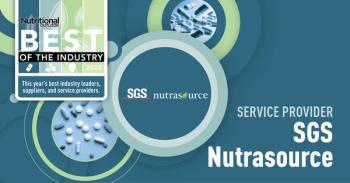
|Slideshows|September 20, 2016
- Nutritional Outlook Vol. 19 No. 7
- Volume 19
- Issue 7
Drugs vs. Dietary Supplements: Head-to-Head Science
Author(s)Irfan Qureshi
Can natural supplements be as effective as drugs-or at least complementary?
Advertisement
Articles in this issue
about 9 years ago
How Should We Market the Cranberry?about 9 years ago
Children’s Dietary Supplementsabout 9 years ago
Protecting the Fellows: Dietary Supplements for Prostate Healthover 9 years ago
Pet Health Supplements: Paw-Portunity Knocksover 9 years ago
2016 Omega-3 Science Updateover 9 years ago
AREDS2 Trial: Omega-3s Don’t Benefit Cognitive Health?over 9 years ago
Dietary Supplements: Made in the USA?Newsletter
From ingredient science to consumer trends, get the intel you need to stay competitive in the nutrition space—subscribe now to Nutritional Outlook.
Advertisement
Advertisement
Advertisement
Trending on Nutritional Outlook - Supplement, Food & Beverage Manufacturing Trends
1
Artemis International: 30 Years of Science-Backed Berry and Botanical Innovation
2
Certifications, Clinical Trials, and Consumer Trust: How SGS NutriSource Serves the Industry
3
New LOAM prebiotic fiber formula includes NutriLeads’ Benicaros ingredient
4
A Leader for the Times: NOW Health Group's Jim Emme on Thoughtful Leadership
5





